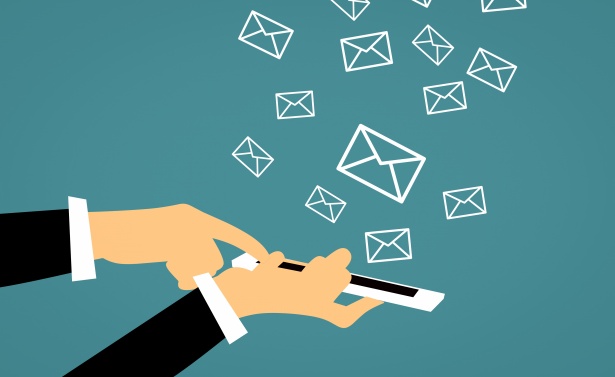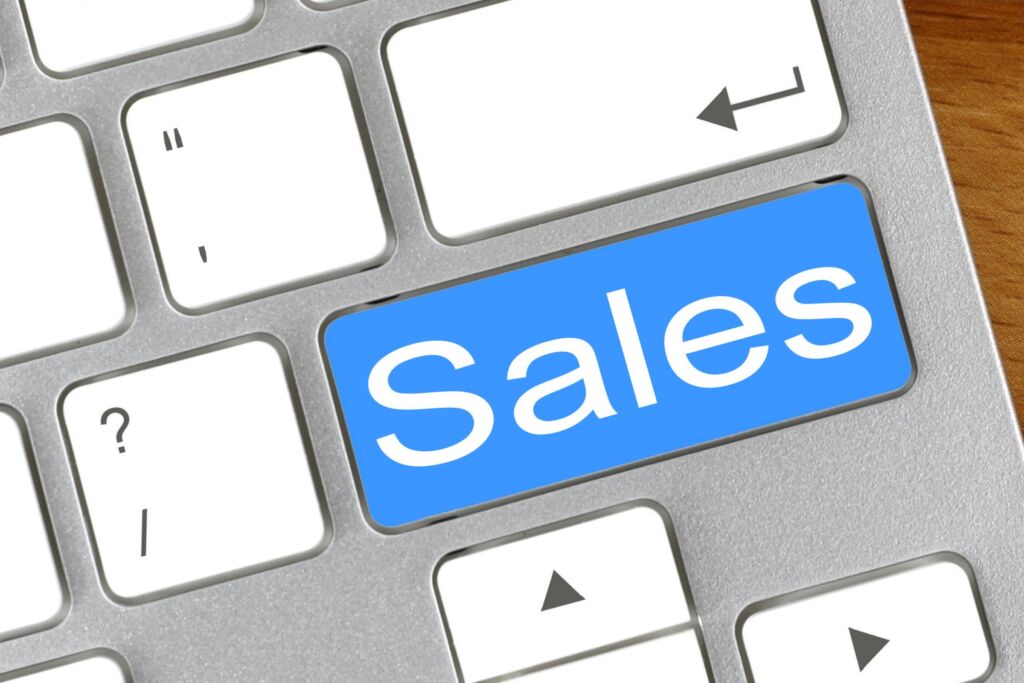In 2022 alone, there were over 333 billion emails sent – and this number is only projected to rise over the next few years according to Daily Number of Emails Worldwide statistics. Email became a common form of communication in the late 1980s and popular with the general public in the mid-1990s. Since then, the use of email has skyrocketed and become the most prominent way to engage with others all over the world. Anyone with an email account is receiving dozens of messages a day, this is why it is important to understand how to write a sales email that stands out from the rest. Whether you are writing the first introductory email, following up on a query, or trying to close a deal there are some basics to cover as we discuss below. Here is what we cover today:

Image courtesy of Public Domain Pictures
The Subject Line of a Sales Email (Page-Up)
You’ve probably heard it your whole life, but first impressions do in fact count. More often than not, this starts with the subject line. Writing a strong subject line will sway the recipient to click on the email rather than just putting it in the trash bin right away. A good subject line should have the following attributes:
- Concise: Keep it short, get straight to the point. A short subject line will grab your reader’s attention.
- Personalized: Depending on the context, consider personalizing, e.g. by including their first and last name or company name. Make the email interesting for them to read. Doing so will keep their attention.
- Conveying value: Offer some value, can you include a promotion or do you have the answer to a question they have? Make them want to continue the conversation.
- Important keywords: Include the right keywords. Incorporate technical words or phrases that mean something to others in the industry. This is important as many people quickly skim through their email list instead of reading the subject lines carefully. Having the right keywords will catch their attention and prompt them to read more carefully.
It may seem like a tedious task, but knowing how to write an inviting subject line can drastically increase your open rate. This one line is a small portion of your email, but the most important. Give it the time and effort it deserves to get it right.
The Anatomy of a Sales Email (Page-Up)
This is where you get the opportunity to explain in detail what it is exactly you are offering the customer and how it will benefit their company. To do this effectively, it is critical to do your research and tailor the information to the customer’s needs. Find their pain points and show them that you have the ability to alleviate their trouble. Let’s look at the key body parts of a successful sales email:
1. The Opening (Page-Up)
Having a strong opening is very important is written communication. After a small customary pleasantry it is best to have a strong opening, directly hitting home the main purpose of the email. It is always good to have a strong anchor, which could be information about your client. Mentioning such a detail will make your email stand out and catch the attention of the reader. For instance, if you know a specific project they are working on or a problem they are trying to solve, mentioning it in the email will gain better attention than a generic opening. That said, writing a sales email should take no more than 5 to 10 minutes, excluding specific circumstances. Focusing too heavily on one email will minimize your sales efficiency. Therefore, remember that you can find quality information about the customer with just a couple of minutes of online research.

Image courtesy of Pix4Free
2. The Gist of the Email (Page-Up)
This is where you convey your message – the main purpose of your reach out. Are you trying to set up a meeting? Are you inquiring about their project timelines, or would like to present your value offering. It’s always a good idea to keep it as concise as possible and quickly summarize everything in one or two sentences. Think of the key points that would interest your customer. Thing empathically, put yourself in his/her shoes, and you can quickly phrase accordingly.
3. The Closure of Your Sales Email (Page-Up)
Once you’ve finished sharing all the necessary information with your customer, it is vital to close your email correctly. This section of your email should provide any essential contact information like your phone number or email address so the customer can discuss the conversation further if desired. Ask them questions that encourage them to follow up with you. Try including a question such as, “Would next week be a good time to talk?” Asking a question rather than writing a closing statement provides the customer with the next steps in the process. This type of call to action is more likely to elicit a response than simply stating that you are looking forward to hearing from them.
Finally, thank the customer. This component does not need to be over-complicated. Simply thank them for their time and consideration, and perhaps tell them not to hesitate to reach out if they have any questions. After this, move on to your sign-off.
The sign-off should be short, sweet, and professional. Try using something like this:
- Sincerely
- Best Regards
- Take Care
- With Gratitude
- Have a wonderful [time of day; morning, afternoon, evening, etc.]
Make sure to avoid any casual phrases. While these may work with friends, they are likely not to work for business emails.
- Love
- Yours
- Talk Soon
- Talk to you Later
- No sign-off at all!
Once you have chosen your sign-off phrase, finish with your first and last name, and you’re done! Well – almost.
4. A Professional Email Signature (Page-Up)
The last component your sales email should include is an email signature. Incorporating an email signature establishes your professionalism and makes it easier for your customer to contact you and learn more about your company. An email signature should be short and sweet but contain any necessary information about you and your company.
In our prior blog post, we discussed the components of a high-performing signature line. Please check that out for a quick intro on how to set up a good signature for your emails.
A Few Sales Email Scenarios (Page-Up)
After understanding the components of a successful sales email, let’s consider a few email scenarios:
1. An Introductory Sales Email (Page-Up)
This is when you are trying to gain a toehold with your customer. It could be a short intro or a request for a meeting. Often these emails are directed to decision makers, so making a good first impression will be vital.
When emailing someone of high status within the company, a shorter email that gets straight to the point is more likely to get a reply. However, if you are conversing with someone you have somewhat of a connection with, you can write a more detailed email to help build the relationship. Despite who you are emailing and how long the message is, it should include key details and be easy to read. A well-written body paragraph should achieve building trust with the customer and show them professionalism. As a result, they are more likely to pursue a working relationship.
2. The Follow-Up Email (Page-Up)
Congratulations! You received a response that shows interest in moving forward, now how should you proceed? First, thank them for responding and show them that you are excited to continue the conversation. From here, you can move on to answering any questions they may have for you while supplying any additional information that was not given in the introductory email. Close by asking them how they would like to proceed and give them a few time slots where you can discuss further on the phone. Here is a template you can use:
Subject Line: Let’s Discuss Our Next Steps
Hi [Name]
Thanks for reaching out! I am happy to answer any questions and I am looking forward to working with you.
[Answer any questions]
[Provide any additional information that may be helpful]
Let me know how you would like to proceed. I am reachable by phone if you would prefer to communicate this way, [Phone Number]. I am available on [Date] at [Times]. Please do not hesitate to reach out!
Best regards,
[Sign Off]
3. Following Up on Your Own Sales Email (Page-Up)
While receiving a response is great, it does not happen as much as we would like it. Therefore, it is important to know how to follow up on an email that does not get a response. First and foremost, make sure you give the customer ample time to respond. Do not send a follow-up email one or two days right after your introductory email. The sweet spot is to wait three days and then send a follow-up email. Waiting more than three days may be too long. When writing a follow-up email, start with a quick but catchy subject line, something like:
- Quick Question
- Your Thoughts on the Matter?
- Staying in Touch
- Thanks from [Company]
Begin writing your email by checking in on them. Ask them how they are or let them know that you hope all is going well, try adding some personalized information about their company. Then give them a reminder of why you are reaching out. However, be careful not to just copy and paste your first email. Reiterate the important information but keep it short. Keep from adding any new information unless it is something of value, maybe a new offer that could be useful to them. Finally, finish off with a positive call to action that is easy for the recipient to respond to. Here is an example of a follow-up email:
Subject Line: Would Love to Stay in Touch
Hi [Name]
Hope all is going well. It seems there are some exciting projects launching over at [Their Company Name].
I am reaching out to see if you had a chance to read my previous email. We have some new deals going on here at [Your Company Name] and I would love to discuss them with you!
Let’s set up a call sometime next week. Would [Date] at [Time] work for you? Please let me know if you have any questions.
Best regards,
[Sign Off]
Receiving a response may be difficult, but writing a strong follow-up email will definitely increase your odds.
Summary (Page-Up)
Writing up a strong sales email that stands out from the rest of the crowd is not a simple task but a doable one. With more and more practice, you can quickly become an expert. When starting your email, remember that first impressions count. Make sure to be professional, quickly get to the point, and add value for your customer.
When writing your body paragraph, tailor the information to the customer’s needs and show them that you can help solve their problems. Just like the first impression, try to keep it short. Finally, when closing out your email, be sure to thank them for their time and provide any necessary information they may need in your signature. And the most important step of them all, reread your email. Check your spelling and grammar before hitting send. Mistakes happen all the time. See to it that you catch them. Make it a habit of following the steps listed above, and eventually, writing a stand-out sales email will become second nature.
What tactics and strategies do you have for sales emails. Please share in the comments below.
